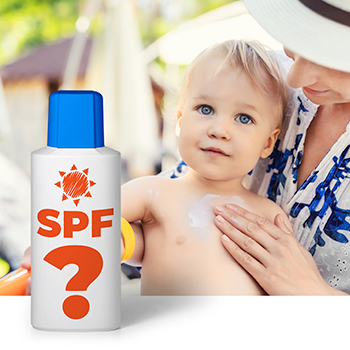
For most of us, summer weather is either already here—or will quickly arrive. Personally, I am looking forward to Memorial Day weekend while I enjoy a family hike and picnic. Until last year, I would buy the highest sun protection factor (SPF) sunscreen I could find to “protect my family against dangerous ultraviolet (UV) radiation.” That’s what all the advertising tells us, right?
The Environmental Working Group has just released its 2012 report and new recommendations related to sunscreens. The recommendations are virtually identical to last year’s 2011 report, but the 2012 database rates 257 brands and more than 1,800 products for sun protection. Both reports advise using mineral, not chemical, based sunscreens and ones under 50 SPF. Additionally, the FDA implemented a new rule that will soon help alleviate some of the problems associated with sunscreens (including overstated claims and inadequate UV protection).
Consumers will still have to be vigilant since the rule does not ban a number of ingredients believed to be toxic and does not require companies to measure whether the product breaks down in the sunlight. Chemical sunscreens absorb into the skin and act by absorbing UV light. They are later broken down and carried in the bloodstream where the byproducts may be stored in the body. Mineral sunscreens sit on top of the skin. They are not absorbed and they provide a protective barrier to UV light.
We all know that overexposure to ultraviolet (UV) radiation from the sun can be dangerous. But what is less clear is how best to protect ourselves from these harmful UV rays. Even scientists admit they know surprisingly little about how effective various sunscreens are, and whether the chemicals they contain cause harmful side effects. There has been evidence that many chemical sunscreens may be harmful and have been linked to hormonal imbalances.
Despite this gap in scientific knowledge, public health agencies still recommend using sunscreens – but not as the first line of defense against the sun. Before glopping on the sunscreen, they advise:
- wearing protective clothing
- finding or making shade
- staying out of the sun between 10 a.m. and 4 p.m.
All of these practices will better guard against exposure to UV rays and lessen the need to rely on sunscreen.
New Sunscreen Basics—What to Look for in Sunscreen Lotions
When applying sunscreen—especially to places like hands, which cannot be adequately covered by clothing—the Environmental Working Group’s Sunscreens 2011 report offers these tips on how to find the safest and most effective products.
First, the group advises, always chose mineral sunscreens over chemical sunscreens. Chemical sunscreens are unstable in sunlight, can penetrate the skin, and can disrupt the body’s hormone systems. The EWG’s report includes a list of the best and worst sunscreens on the market, but it also generally recommends that you:
Look for:
- Zinc
- Titanium dioxide
- Avobenzone or Mexoryl SX
- Cream or lotion
- Broad-spectrum protection
- Water-resistance
- SPF 30+
Avoid:
- Oxybenzone
- Vitamin A (retinyl palmitate)
- Added insect repellent (if you need bug spray, buy it separately, and apply it first)
- Sprays or powders
- SPF above 50+
Meanwhile, if you plan on enjoying the summer weather this weekend, remember first to look for shade, wear protective clothing, and avoid the noontime sun. When you do apply sunscreen, be sure to look for a mineral-based product that meets the above requirements.
